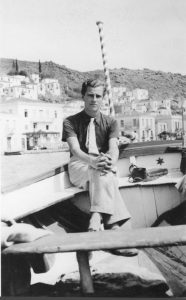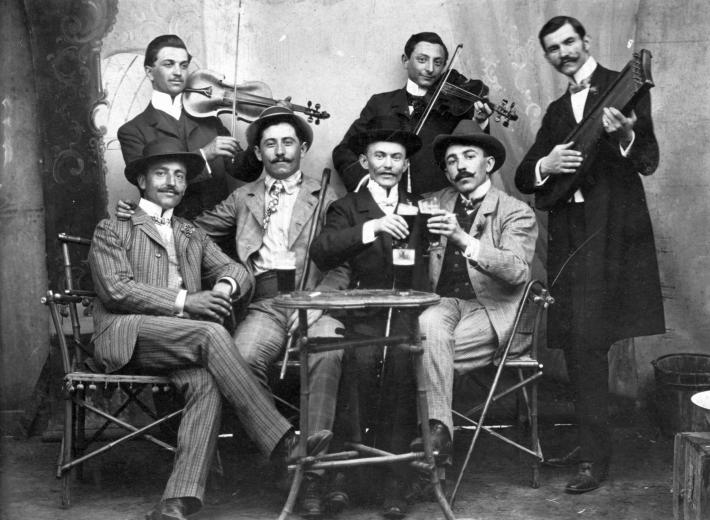
In 1934 a nineteen-year-old adventurer, Patrick Leigh Fermor, crossed Europe from the hook of Holland to Constantinople. He travelled mostly on foot. He was the same age as my father. A passage from his beautiful travel memoir, written years later, inspired this blog post. Fermor wrote, in Between The Woods and The Water: “The way Hungarians construed hospitality was a recurring miracle.” Barons and countesses took the young Brit under their wing. They were impressed by his wit, his learning and the audacity of his journey,. So hospitable were the Hungarians that Paddy Fermor loitered in Budapest for quite awhile before pushing eastwards.
Reading this description led me to seek out the music Fermor describes… and a few pictures to go with it. Czárdás music derives from traditional Hungarian folk dance. The name comes from csárda an old Hungarian term for tavern. It is characterized by a variation in tempo: it starts out slowly and ends very fast. The violin and czembalom (hammered dulcimer) are key instruments. This music is performed by Ferenc Santa and His Gypsy Band. The pictures accompanying it come from http://www.fortepan.hu. This online photo archive is a treasure. It consists of 38,3888 historical and personal photographs spanning the 20th century in Hungary. The images come from individual citizen donors and permission to use them is freely given.
Life seemed perfect: kind, uncensorious hosts, dashing, resplendent and beautiful new friends against the background of a captivating town; a stimulating new language, strong and startling drinks, food like a delicious bonfire and a prevailing atmosphere of sophistication and high spirits that it would have been impossible to resist had I wanted. I was excited by the famous delights of the place, especially by certain haunts like Kakuk (the Cuckoo) on the slopes of Buda, where, late at night, half a dozen Gypsies bore down on the guests like smiling crows bent on steeping everything in their own peculiar music…. In the slow passages the hammers of the czembalom fluttered and hesitated over the strings and the violins sank into a swooning languor, only to rekindle with an abrupt syncope when the hammers and bows broke into double time and the czembalist went mad as the leading violinist … stooped and slashed beside one listener’s ear after another and closed in on his instrument like a welterweight in a clinch; … passages, one might think, which could only end in ecstasy of a dead feint.

Peter Szarka
March 13, 2019 at 4:18 pmWell, the music… is a piece by Vittorio Monti. Which IS called “Csárdás” (czardas) but that is not the real thing. This is the real one, at least one version of the billions of the variations:
https://www.youtube.com/watch?v=u1eGwQPJ7Dw
Enjoy it.
John Alsop
August 24, 2014 at 12:37 amI love the Romantic Hungary photos. What a world.